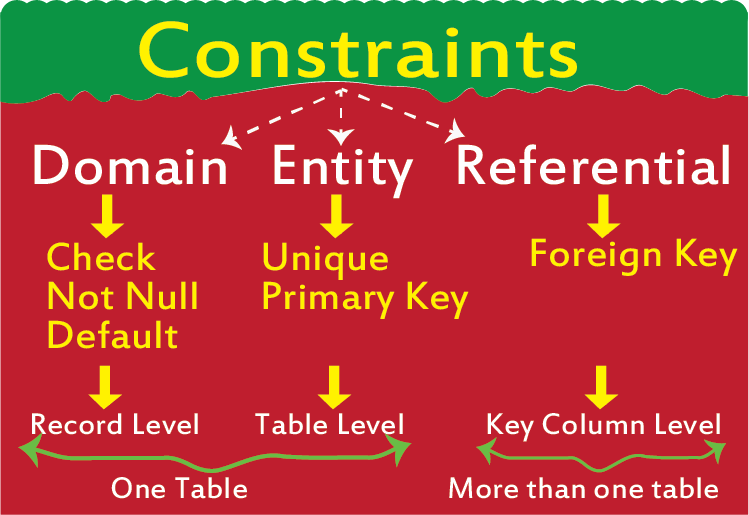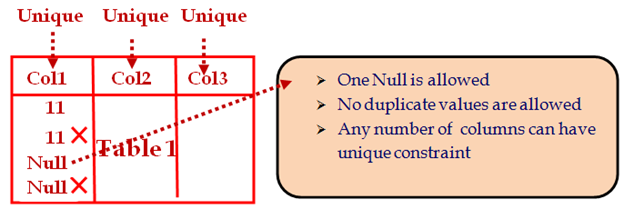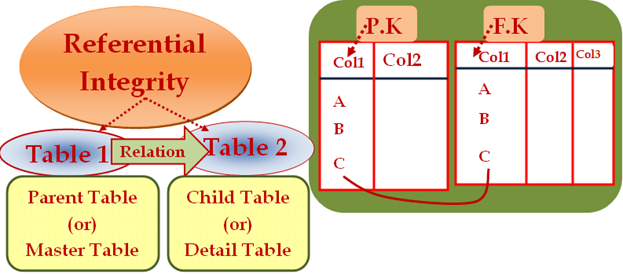- Constraint refers to rule or condition
- These constraints can be (i)User Defined (ii)Pre defined
- Use CONSTRAINT key word to define the constraint
- Domain Integrity Constraint
- Entity Integrity Constraint
- Referential integrity Constraint
- Allows the user to enter the data based on Condition
- This constraint allows DUPLICATES
- It is a Column Level constraint
- This constraint doesn't allows the user to enter the NULL VALUES in a column
- User can apply this constraint on any number of columns
- It will provides the value for that column by DEFAULT, when the value not inserted by the user
- When the user doesn't provides the data application by default considers the mentioned value
- Entity Integrity constraint applicable for entire table to recognize unique records.
- Primary Key
- Unique Key
- A Table allows only one PRIMARY KEY
- Using Primary Key we can identify the row, for that it is termed as entity integrity.
- Features of Uniqe Key Constraint:
- Referential integrity constraint refers to maintain relationship among the tables. It can be executed with the help of “Foreign Key”
- When the user wants to refer the column values based on another table column values, this constraint is called as referential integrity constraint
SQL Constraints
Constraint Flow\Classification

Classification of Constraints
Domain Integrity Constraint
Check Constraint

Not Null Constraint

Default Value Constraint

Entity Integrity Constraint
These are divided into 2 categories.



Unique Key Constraint:

Syntax:

Referential_Integrity Referential Integrity Constraint



